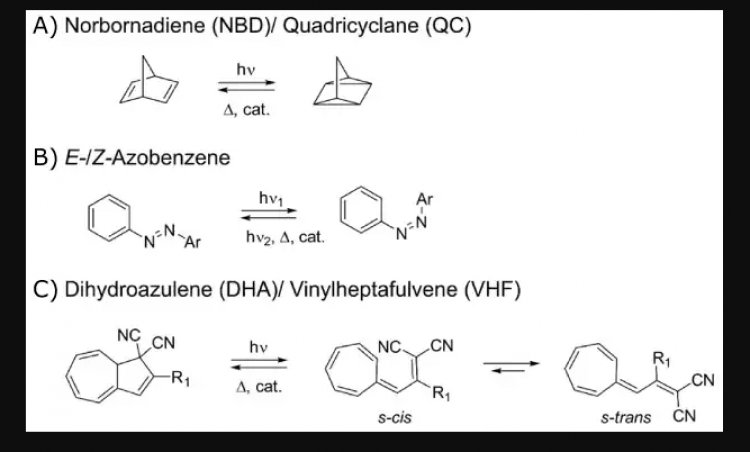Molecular Solar Thermal Energy Storage Systems

Introduction
With worldwide population growth, the global energy demand has drastically increased and will rise by an average of 1.3% annually until 2040.1 Currently, this challenge is not merely addressed by conventional energy sources such as oil, coal, gas, or nuclear power, but also by renewable energy sources such as wind and solar energy. The demand for renewable energy sources has been increasing even during the economic crisis due to lockdowns caused by the global pandemic, Covid-19.2,3 The renewable energy share, among the total energy mix, increased to 5.7% in 2020, outnumbering nuclear energy at 4.3%.3 The growth for wind and solar energy was 238 GW in 2020, which is 50% more than any single year in history. The sun, being most abundant among renewable energy sources, delivers around 235 Wm-2 on average.4 Typically, energy from the sun is used directly for heating or electric power production; however, as renewable energy continues to grow as part of the energy mix, efficient energy storage becomes a growing challenge. A promising approach for solar energy harvesting and storage is the concept of molecular solar thermal energy storage (MOST) systems also known as solar thermal fuels (STF). Solar energy is used to drive the chemical reaction of a molecule, usually referred to as a molecular photoswitch, leading to an energy-rich metastable isomer, which stores the energy. The energy can later be released on demand, controlled thermally, catalytically, or through irradiation with selected wavelengths of light. In this article, we introduce the requirements for a MOST system, the structures of different photoswitches, their general charging and discharging mechanisms, highlight the accessibility of the material by synthetic production, and describe possible uses of the stored energy.
























